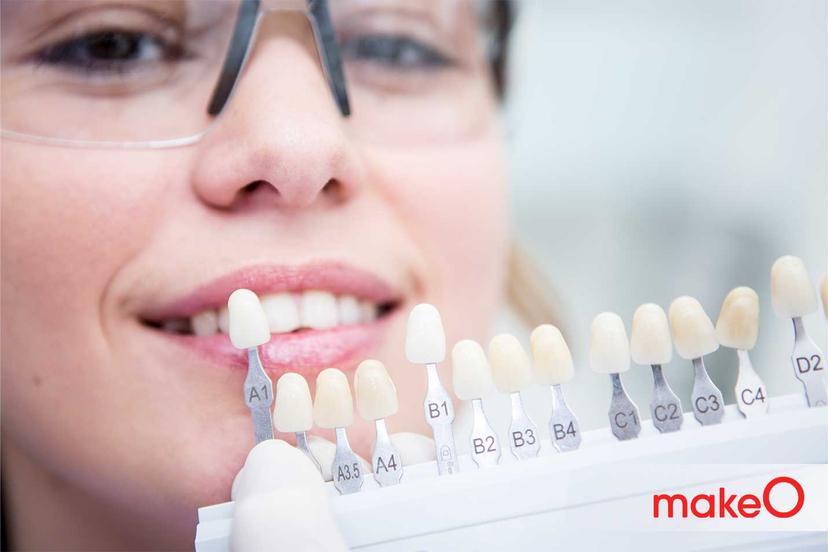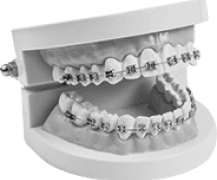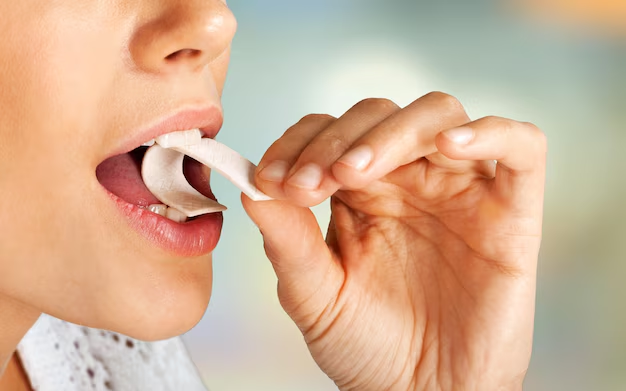MakeO blog
Chewing gums have been around for centuries, with the earliest sightings in Sweden dating back to 9000 years. Archeologists found birch bark tar with tooth impressions of children and adolescents. The Greeks are also known to have used a similar substance called mastic. Scholars assume that the word mastication, which means chewing, is derived from it![1]
Chewing on gum is a common habit in a lot of people, usually because of its sweet taste and potentially calming effect. However, research has found that excessive gum chewing can impact your oral health both positively as well as negatively. In this blog, we will discuss in detail the effects of habitual gum chewing on your orofacial structures.
Ingredients of chewing gums (pros and cons)
The original form of gum known as chicle gum, was made from Sapodilla tree’s sap. However, over time, natural ingredients were replaced with a synthetic rubber-like material called polyisobutylene.[2] The gum base also has other ingredients like polyols, acidulants, colors, and sweeteners, along with various additives.[1]
Based on the sweetener, chewing gum is divided into two types. The first and the most popular ones are those with artificial sugar additives like glucose, fructose, sucrose and maltose.[1] Research suggests that these gums cause tooth decay because the sugar is broken down into acid by the bacteria in the mouth. An increase in the production of acids could leach away the protective layer called enamel. Through the enamel, the bacteria can also infect the dentin layer and the pulpal tissues within the teeth, causing severe decay.[3]
The second type and the much safer ones are sugar-free gums. These use polyols like xylitol, sorbitol, maltitol or mannitol which do not trigger the over-production of acids, thereby protecting the enamel.[3]
Effects of chewing gum
If you are in a habit of chewing gums regularly, you must know how they can affect your oral health. Let’s have a detailed look at this.
Benefits of chewing gum:
Generally, chewing sugar-free gum is considered good for oral health as it increases the production of saliva. Insufficient saliva can cause xerostomia, or dry mouth, which can lead to bad breath or tooth decay. Chewing gum can help avoid this and maintain salivary production. These also help retain optimal acidity levels in the mouth, protecting the teeth and gums. Plus, if you have crowded teeth that’s causing food to rot and lead to bad breath, chewing gums are great breath fresheners!3]
Side-effects of chewing gum:
At the same time, habitual chewing of gum can lead to ill-effects in the mouth and associated structures. Most importantly, the sugary gums can lead to tooth decay and erosion. Moreover, excessive chewing of any type of gum can cause- Headaches Jaw pain/ temporomandibular joint (TMJ) disorders Tooth wearing and fracture, which can result in tooth sensitivity, pain and infection [3]
TMJ disorder is caused when the joints are exerted with excessive and constant force due to chewing. Common signs of this include clicking or popping sounds from the joint, pain, and difficulty in jaw movements. It can also lead to teeth alignment issues like crowded teeth, crossbite, and underbite. If you suffer from misaligned teeth or bite issues, a dental aligner can get your teeth back in place.[3]
Using chewing gums while using aligners
Aligners, or invisible braces, are a set of clear, plastic-like trays that are used to correct the alignment of the teeth. They are custom-made to fit each patient. The equally applied pressure from aligners pushes the teeth to arrange in order. These are worn for at least 22 hours a day and are only removed when eating.[4]
Chewing on gum while wearing invisible aligners poses the risk of it getting stuck to them. This can potentially damage your aligners. [5]
Also, the sugars present in the gum can create a conducive environment for harboring harmful bacteria on your aligners. Moreover, excessive chewing forces can create undue pressure on the teeth and may interfere with the functioning of aligners.
If you wear aligners and want to chew gum, you will have to remove the aligners to be able to do so. However, aligners, while removable, are recommended to be worn at all times. Constant removal may delay the procedure and restrict the teen aligners from doing their job.
Thus, it is best to avoid chewing gum when wearing clear aligners.
Conclusion
Chewing gum has both pros and cons for your oral health. Consuming sugar-free gum can help prevent tooth decay. However, habitual chewing of any type of gum can lead to tooth wear and jaw problems. It is also important to maintain proper oral hygiene when using these gums. Importantly, they should be avoided if you wear dental aligners as they can damage your aligner. Yet, if you are a habitual chewer and cannot resist, opt for sugar-free alternatives and chew them only for a brief period after removing your aligners. You can discuss the best possible strategy with our team if you need aligners but can’t stop chewing on the gum.
Related articles

Types of Braces: Removable vs Fixed Braces, Which is Right For You?

This Diwali, Smile Bright With makeO Teeth Whitening Kit

Dr. Pravin Shetty: Pioneer in Lingual Orthodontics & Innovative Smile Solutions
How do I Know I’m the Right Candidate for makeO toothsi Teeth Aligners?

